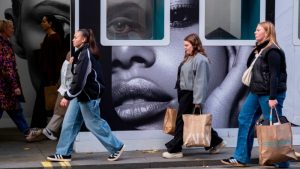We are a bit Neanderthal
Unlock the Editor’s Digest for free
Roula Khalaf, Editor of the FT, selects her favourite stories in this weekly newsletter.
Through Lluís Quintana-Murci’s window, fog obscures the Eiffel Tower. The Mallorcan geneticist, long a fixture of the Institut Pasteur, still hasn’t adapted to Paris’s greyness. He is a migrant, appropriately. His book Human Peoples, about this century’s breakthroughs in genetics, explains that humans have always been migrants. “This is not champagne socialism,” he says. “It’s science.” And migrant humans mated (“admixed”, say geneticists) with other groups they encountered.
Genetics has advanced unimaginably since the 1990s, when Quintana-Murci did his PhD. The Human Genome Project, which sequenced the 3.2 billion nucleotides in our genome, was completed in 2003. From the 2010s, advances in studying ancient DNA allowed geneticists to compare prehistoric and modern genomes. Their findings are reframing our history. Now we can map human migrations since Homo sapiens first left Africa about 60,000 years ago. The past, says Quintana-Murci, is “the most natural experiment ever”, because it was carried out by nature itself. Genetic history helps explain who we are.
A fundamental finding: because Homo sapiens is a comparatively recent species, about 200,000 to 300,000 years old, people are all genetically quite similar. The world’s eight billion humans are much less diverse than our 200,000 chimpanzee cousins, writes Quintana-Murci. “The differences between the genomes of two humans chosen at random, whatever their ethnic or geographic origins, are of about three million nucleotides, in other words, 0.1 per cent of the genome.”
Few of these differences are ethnic. Senegalese individuals differ significantly from one another, but as a group are very like people from Lille, France. On average, he writes, “85 per cent of genetic variability is observed within a population, the rest being observed between them.” It therefore makes little genetic sense to speak of “Africans” or “Europeans”, given that we all originated in Africa and have hardly diverged genetically since. Quintana-Murci says that mapping our genome moved us from “a hermetic view of different populations, to a view of a metapopulation, made up of many different groups, constantly exchanging genes”.
Our sense of ethnic difference is exaggerated by certain visible differences, above all, skin colour. Humans adapted to different climates through natural selection. Darker skin helped protect against the hot African sun. In cold climates, where the ultraviolet rays that maintain production of vitamin D are scarce, lighter skin helped absorb them. But these differences are largely skin-deep.
White and black people aren’t separate “races”. “There are no ‘pure’ populations,” says Quintana-Murci. “What are we? We are admixed, nothing but admixed, all of us.” The earliest documented admixture happened “as soon as humans left Africa and met the Neanderthals”. (A mere decade ago, most scientists assumed we hadn’t mated with them.) Today’s Europeans, who all carry Neanderthal genes, aren’t “100 per cent sapiens”.
The great danger throughout our history, until we acquired vaccines and antibiotics, was pathogens. Migrants arriving in a new place encounter unfamiliar bugs. But locals have already adapted, through natural selection. Only individuals whose immune systems could fight local pathogens survived and reproduced. So the quickest way to produce children who could survive in that place was to mate with a local.
What’s next in the human journey? Personalised medicines that target each individual’s genome are still a long way away, warns Quintana-Murci. Part of the difficulty is that, typically, multiple genes affect the risk of developing a particular disease.
Something else big is already changing, though: natural selection among humans is slowing. That’s because today’s vaccines and medicines allow almost everybody in richer countries, whatever their genes, to live to reproductive age. Natural selection still operates in other ways, though. For a start, it works, much faster, on microbes. They are adapting to survive our medicines. Many are becoming resistant to antibiotics.
Meanwhile, in humans, natural selection now targets reproduction more than mortality. Male fertility, in particular, is falling: sperm levels have more than halved in 40 years, probably driven largely by obesity, smoking and endocrine disruptors in agriculture. Ever more people reach reproductive age but don’t reproduce. How might these developments change our genes? The geneticist chuckles: “Let’s meet in 3,000 years and see!”
Email Simon at [email protected]
Follow @FTMag to find out about our latest stories first and subscribe to our podcast Life and Art wherever you listen
#bit #Neanderthal




